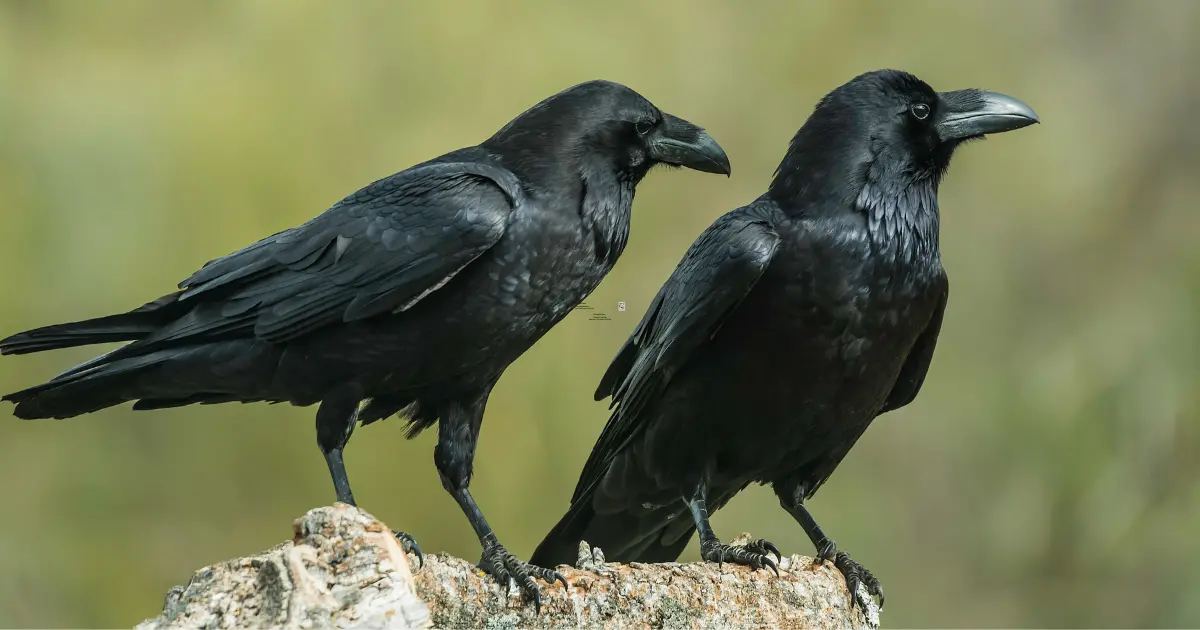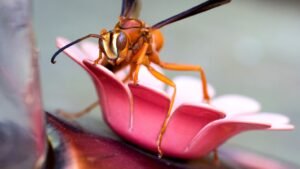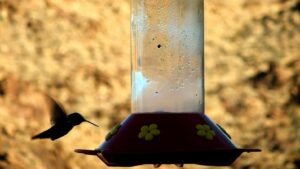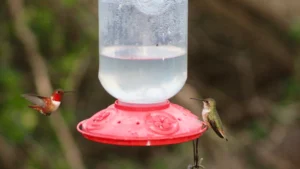While driving, I usually see ravens near the road, raiding garbage cans, and I often wonder if their diet consists of just human garbage. However, the diet of these rugged blackbirds goes beyond eating garbage; ravens are omnivorous and will eat human food, mammals, plants, reptiles, invertebrates, and more.
Just like eagles, ravens are opportunistic feeders, but they prefer to forage than hunt. They may occasionally hunt in pairs when they are targeting larger prey. When ravens walk into the “restaurant of the wild,” what do they order? Let’s find out.
Ravens: What Do They Eat?
A common raven will eat anything it can catch. Whether it is insects, seeds, garbage, or fruit, a raven will eat it.
The nature of ravens makes them scavengers. They eat a wide variety of food and especially like to eat decomposing flesh or plant matter. It would help if you did not think that the ravens’ eating habits are disgusting; these birds’ eating habits help the food chain and ecosystem.
In the next paragraph, we will discuss some of the food menus of a raven in more detail.
- Mammals
Mammals are easily found in the ecosystem, which makes them a prime menu for birds such as ravens and eagles. Mammals that ravens eat are moles, field mice, and lagomorphs. Ravens also eat rabbits, but they usually go for juveniles because they are easier to catch.
Ravens will often hover around the air as they look for carcasses of dead animals. They share similarities to vultures in their scavenging techniques, and Ravens will feed on the carcasses of dead horses, deer, goats, or any other animal they can find.
Even though ravens are scavengers, they can hunt when the situation demands it. These Corvus birds will target the newborn of large animals. These mammals are usually bigger than the raven, but that doesn’t deter the raven. Instead, the raven will call its friends, and they will hunt in crowds to take down the calf or baby goat. Ravens mainly target farm animals. If you have a farm, ensure that you keep the newborns of your animals in sheds.
- Amphibians and Reptiles
Ravens also eat reptiles. Reptiles are usually not the first choice of a raven, but they will eat them nonetheless, especially in areas where reptiles are abundant. Reptiles that often find themselves in the belly of a raven includes geckos, tortoises, lizards, and frogs.
Ravens wreaked havoc on the population of desert tortoise species in the West Mojave desert. The population of the desert tortoise has significantly reduced thanks to ravens. When mammals and carrion are abundantly available, ravens will not hunt reptiles.
- Invertebrates, Insects, and Arthropods
Ravens do enjoy eating invertebrates and insects. The raven prefers these animals because they are usually a staple food for many raven species. Ravens also enjoy catching insects and arthropods because they are abundant in the ecosystem and easy to catch.
Some insects, arthropods, and invertebrates that become food for the ravenous ravens are grasshoppers, beetles, caterpillars, scorpions, and earthworms.
- Birds
Birds also make an excellent food source for ravens. Ravens are not beyond stealing the young of other birds from their nest. These black predators often target ducklings, goslings, or even wounded birds. The raven may also target pigeons, guineafowl, chickens, auks, fulmar, etc.
- Plants
Even though ravens will eat mammals, for the most part, they may also feast on plants. Crows and ravens have caused many problems for farmers, regularly eating up their crops for centuries. Scarecrows were specially made for crows and ravens too.
Ravens regularly eat the seeds of crops like alfalfa and wheat, and they are also known for damaging corn crops. Ravens also eat nuts; when they eat nuts, they will drop them on a hard surface, causing them to break before eating the kernels. Smart birdy, isn’t it?
- Carrion and Coastal Items
Ravens may hunt live prey such as birds and small mammals, but their true love is carrion. Ravens love to eat carrion, and they consume large amounts of it. Ravens will wait till predators such as wolves or bears kill prey and leave the remains before coming down to eat. When they are living near the human population, ravens will scavenge roadkill.
Some ravens live near coastal habitats, which allows them to incorporate many coastal items. Some of the coastal items that ravens eat include crabs, fish, mussels, barnacles, oysters, worms, etc.
- Human Food and Other Items
Ravens are well adapted to living in urban areas, which makes them regularly interact with humans. The interaction ravens have with humans includes destroying farmer crops, killing puppies, and eating human food. Crows have a higher population than ravens in areas with many humans.
Dog food left outside, unattended picnic baskets, and any other food humans have thrown away are everyday items that ravens will steal.
Cooked chicken or turkey pieces are a great way to entice ravens to your garden because it is forbidden to keep ravens as pets in the United States. I don’t know why anyone will want to have these birds around, though, because they can and will kill and eat your chicks.
Other items that ravens could eat include eggs. The raven will follow other birds to their nest and wait patiently for the mummy bird to leave before breaking into the nest and looting the eggs! Ravens can be genuinely a menace.
If you live in an urbanized area, you may have spotted ravens scavenging around bins and landfills. Also, if you are in Alaska, you will likely spot a raven scavenging during the winter.
How Do Ravens Hunt?
Ravens will hardly hunt because they are primarily scavengers and opportunistic feeders. Ravens will usually forage in areas that have different plant matters.
However, ravens will do so in pairs when they need to hunt. They’ll destroy egg and baby bird nests and divert others from their catch by emptying nests. They occasionally hunt in bigger groups to kill lambs and other young farm animals.
Ravens are among the world’s most intelligent birds, capable of devising cunning plans to lure out prey animals, including other ravens, and steal their food.
How To Get Ravens To Visit Your Yard
I don’t know why anyone would like to invite ravens to their yard, but for those wanting to have these black birds visit them, here is how to get ravens to visit your yard.
You can use corn as bait to get ravens to visit your yard. Using corn is safer than using cat food because the latter may cause raccoons also to come to visit. You don’t want that.
Ravens are highly intelligent. So, if they notice that you are offering them food every day at the same spot, they will return in large numbers. Crows which are also members of the corvus family have been known to bring gifts for their human friends.
A birdbath is another item that ravens find to be quite alluring. Install a dark, smooth, and long bird bath to draw ravens to your garden. Ravens enjoy drinking from the birdbath and occasionally leave their prey in the tub to be eaten later.
Ravens are brilliant birds and full of confidence; this makes them relatively easy to befriend. When approaching a raven, approach them with kindness, and it will learn to trust you.





